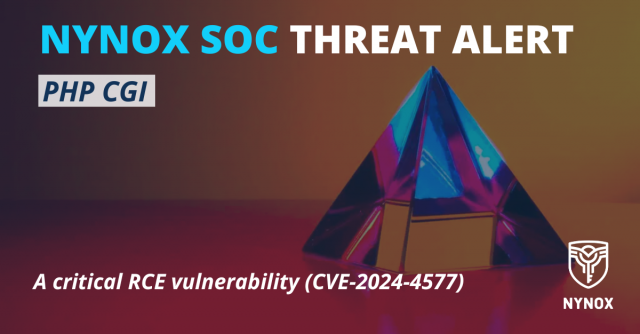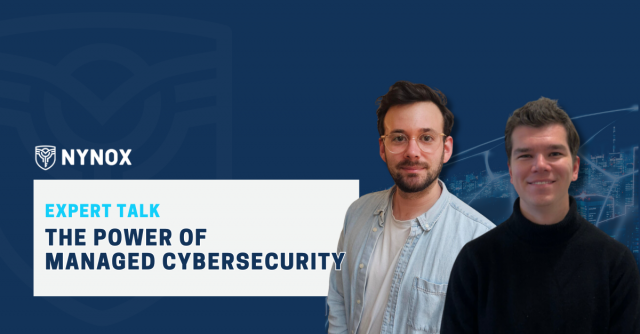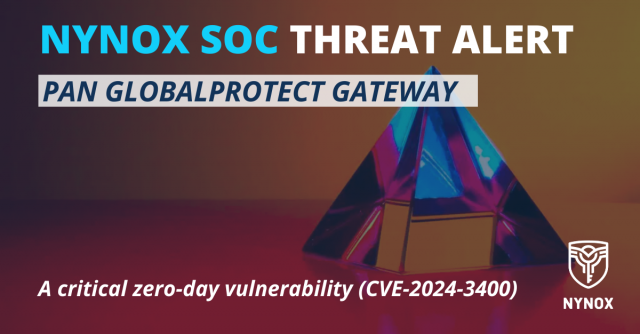Deciphering the Layers of Cybersecurity Maturity
An IBM@CRONOS series
Welcome to the latest installment of our ibm@cronos series. In this blog, we’re taking a fresh look at the nuances of maturity, breaking it down into three digestible tiers of progression. Alexander van Gils, cybersecurity Cybersecurity Expert at Nynox, will guide us through the first stage, while Federico Meiners, our seasoned Cybersecurity Architect, helps us navigate the more advanced levels. Let’s dive in!
Security Basics: The First Tier (0-400 Employees)
Embracing cybersecurity measures doesn’t always demand significant setup or complex strategies. As Alexander rightly points out, “Any entry-level security is security you can do today, right now.” It’s about taking the necessary, initial steps towards securing your business without unnecessary complications or investments. Nynox helps assess the risks linked to your specific situation, weighing them against costs and identifying assets to elevate the overall security.
At this stage, there are also quite a few misconceptions surrounding cybersecurity. As Alexander states, many assume that robust cybersecurity is only necessary for large corporations. This idea stems from a general misunderstanding of the threats that can target any business, regardless of size. Security isn’t a luxury only big ventures afford; it’s a critical necessity for all businesses.
Another common misbelief is that security tools are intrinsically secure purely because they are tied to security. How secure a tool is largely depends on factors such as how up-to-date the software is, how effectively it is configured, and whether it is suited to the unique needs of its specific environment. Hence, businesses can enhance their security position simply by updating existing software, implementing precise access controls, and viewing their infrastructure comprehensively.
The path to entry-level security involves assessing one’s situation to identify what actions can be taken immediately. Alexander suggests beginning with straightforward steps, such as enabling MFA, installing an antivirus tool, or patching existing software.
In essence, entry-level security is all about what actions your organisation can take right now. It doesn’t have to be a marathon — even a small step towards a more secure company is a significant stride in the right direction.
Beyond Basics: The Second Tier (500-2.5K Employees)
Having established your security basics, there might come a point where you sense the need for something more robust. Here’s when you start looking to transition to next-level security. Our experience with numerous businesses has shown us three classic triggers that indicate it is time to escalate your security stance.
The first and most common wake-up call is when a company experiences a breach. For many, security often becomes a focal point only after a breach.
Another instance is when you have the foresight to identify the gaps in your defences proactively – what Federico terms as ‘seekers,’ those who research security and wish to maximize their technology’s potential. The third trigger is companies heavily dependent on outsourced IT processes. They understand the need for an additional control layer to prevent all their eggs residing in one basket and require an external perspective on operations to get a full picture.
Having touched on various triggers, let’s delve into what next-level security looks like and its cost implications. With growing businesses, security parameters including compliance requirements, firewalls, technology continue to get complex. Federico emphasizes an ally, either internal or external, like an external Security Operations Center (SOC) such as Nynox, is crucial in shedding light on the grey areas of security—the unnoticed detections or overlooked alerts. Additionally, having an incident response team to call in emergencies significantly bolsters next-level security. They could be internal experts, or better yet, external allies with a broader perspective, ready to address breaches or answer security questions.
In summary, next-level security is characterized by clear action channels during security crises and effectively identifying the blind spots in your defence. However, this needn’t be cost-prohibitive. Federico reassures us that sturdy next-level security can be achieved at half the cost of two full-time security employees. The key lies in strategic phased implementation, starting with critical log sources and gradually enhancing alerting levels and cooperation between the companies.
Security Amid Chaos: The Third Tier (2.5k+ Employees)
As we tread into more complex terrain, we journey from knowing what and how to do security, right into the throes of chaos – your company recognizes the challenges and realizes the need for advanced security measures. You might have myriad solutions dispersed throughout your organization and struggle to enforce uniform configurations across disparate operations. Suddenly, you’re facing multiple locations, languages, and technologies – the seemingly chaotic world of third level security.
Despite the surrounding turbulence, it’s crucial not to lose sight of the fundamentals. Perhaps you’ve invested in a Security Operations Center (SOC), organized an incident response team, and utilized sophisticated technologies. But amid all these measures, moving to the next level necessitates “doing the basics at scale.”
Federico warns against the allure of new, shiny tech trends like AI, emphasizing that it’s the ruthless attention to security fundamentals that truly fortifies your operations. Rather than chasing the latest tech buzzwords, you should continuously assess whether all your technologies have necessary security features in place, and more importantly, if you’re effectively overseeing your users’ activities within your organization.
Yet, this process necessitates a high level of labour with a spotlight on choosing the right people for your company. As Federico highlights, “In the first two levels, most solutions fit most use cases. But now, it’s all about the priorities of your company.” Managing third level security demands a skilful balancing act between managing people, steering processes, targeting efforts, and acknowledging that your corporate priorities define your security stance.
Perhaps it’s compliance, legal protection, or a new SaaS application making its debut on the internet – identifying where to concentrate your security ‘cannons’ becomes central in this stage. It’s really all about understanding how to manage chaos by, paradoxically, returning to the basics. Third level security might seem overwhelming, but with the right people, processes, and priorities in place, even the apparent chaos can be tamed.
Nynox’s Distinct Approach
Nynox provides a unified approach for Managed Detection and Response (MDR): We set the required prevention layers, ensure monitoring and controls through detection and response to incidents with our dedicated CSIRT Team. This ensures your business stays fortified round the clock, letting you sleep easy knowing that your business is safe.
Additionally, chances are that you faced tricky questions and scoping when evaluating monitoring services. Our service is designed to give you the security you need with no excuses or overhead.
Adding uniqueness to our service is our Human-Machine Approach; we blend the technological prowess of advanced systems with the finesse of the human touch. AI & Automation are essential, but you probably want real humans in case of an incident. At Nynox, you’ll meet regularly with our human experts, backed by state-of-the-art technology.



